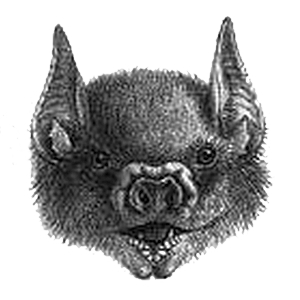Antillean fruit-eating bat facts for kids
Quick facts for kids Antillean fruit-eating bat |
|
|---|---|
 |
|
| Conservation status | |
| Scientific classification | |
| Genus: |
Brachyphylla
|
| Species: |
cavernarum
|
 |
|
| Cuban fruit-eating bat range | |
The Antillean fruit-eating bat (Brachyphylla cavernarum) is a fascinating type of bat. It is one of two species in its group, called Brachyphylla. These bats live in the Caribbean region. You can find them on islands from Puerto Rico all the way to St. Vincent and Barbados. Scientists have also found old bat fossils in the Bahamas.
Contents
What are the different types of this bat?
Scientists group living things to understand them better. The Antillean fruit-eating bat has three main types, called subspecies. Think of them like different breeds of a dog, but they are all still the same species.
- The largest type: B. c. cavernarum is the biggest. It lives from St. Croix to St. Vincent.
- The middle-sized type: B. c. intermedia is medium-sized. You can find it in Puerto Rico and most of the Virgin Islands.
- The smallest type: B. c. minor is the smallest. This type lives on the island of Barbados.
What does the Antillean fruit-eating bat look like?
The Antillean fruit-eating bat has fur that is white to yellow-white at the bottom. The fur on its back, called the dorsum, is usually darker.
Adult bats are about 65 to 118 millimeters (2.5 to 4.6 inches) long. Their forearm, which is a key measurement for bats, is about 51 to 69 millimeters (2.0 to 2.8 inches) long. On average, these bats weigh around 45 grams (1.6 ounces).
Where do these bats live and what do they eat?
The Antillean fruit-eating bat lives in Puerto Rico, the Virgin Islands, and the Lesser Antilles. Their range goes north to St. Vincent and Barbados.
These bats like to rest, or "roost," in many different places. They can be found in old buildings, caves, and even dense tree tops. They also use cracks in cliffs, large wells, and other hidden spots. They prefer places that don't get direct sunlight. However, large groups of these bats have been found in sunny areas too. On St. John, they live in dry areas with many trees.
The Antillean fruit-eating bat has a very varied diet. This means they eat many different things! They enjoy fruits, pollen, nectar, and even insects.
Some of the fruits they eat in the wild include papaya, mango, Indian almond, and sapodilla. They also eat fruits from trees like manjack (Cordia spp.) and royal palm.
When kept by humans, these bats have been seen eating bananas, apples, pears, and melons. They also like the flowers of trees such as the kapok, sausage tree, royal palm, and jatobá.
Besides plants, they also eat small creatures. Scientists have found them eating mites, batflies, and ticks.
These bats are busy eaters! They feed both high up in the forest canopy (the top layer of trees) and down on the ground.
How do Antillean fruit-eating bats behave?
Antillean fruit-eating bats have a special routine for leaving their roosts. They all fly out about one hour after the sun sets. This is about 20 minutes after another bat, the Jamaican fruit bat (Artibeus jamaicensis), starts its flight.
They also return to their roosts together. This happens just before the sun rises in the morning. This synchronized behavior helps them stay safe and efficient.
See also
 In Spanish: Brachyphylla cavernarum para niños
In Spanish: Brachyphylla cavernarum para niños


